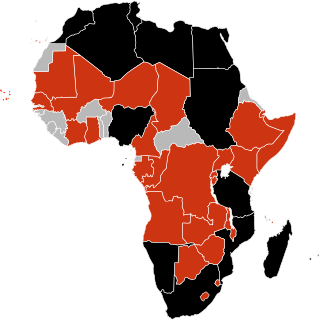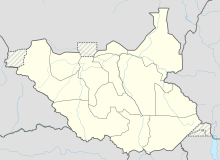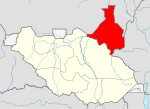
Taiwan Taoyuan International Airport, also sometimes referred to as Taipei-Taoyuan International Airport, is an international airport situated in Taoyuan City which serves the entire northern Taiwan region including the capital city Taipei. Located about 40 km (25 mi) west of the capital Taipei in Dayuan District, Taoyuan, the airport is the busiest and largest in Taiwan. In 2016, it was ranked the best airport for its size in the Asia-Pacific region by Airports Council International.

The National Assembly is the lower house of the National Legislature of Sudan. The Legislature was unicameral until 2005. The upper house is the Council of States.

The Roman Catholic Archdiocese of Khartoum is the Latin Metropolitan archbishopric with See in national capital Khartoum whose Ecclesiastical province, including the suffragan Obeid, covers Sudan.

The 2009 flu pandemic hit Africa two months later than other continents with the first case reported in Egypt on June 2, 2009. As of December 1, 30 countries in Africa had reported cases and 7 countries in Africa had reported a total of 108 deaths. It was the least affected continent.

Visa requirements for Italian citizens are administrative entry restrictions by the authorities of other states placed on citizens of Italy.

Visa requirements for Bruneian citizens are administrative entry restrictions by the authorities of other states which are imposed on citizens of Brunei.

Visa requirements for Cypriot citizens are administrative entry restrictions by the authorities of other states placed on citizens of Cyprus.
Visa requirements for Dominican citizens are administrative entry restrictions imposed by the authorities of foreign states on citizens of Dominica. As of July 2023, Dominica citizens had visa-free or visa on arrival access to 137 countries and territories, ranking the Dominican passport 35th in the world in terms of travel freedom according to the Henley Passport Index.

Visa requirements for Norwegian citizens are administrative entry restrictions by the authorities of other states placed on citizens of Norway.

Visa requirements for Cambodian citizens are administrative entry restrictions imposed on citizens of Cambodia by the authorities of other states.

Visa requirements for Dominican Republic citizens are administrative entry restrictions by the authorities of other states placed on citizens of the Dominican Republic. Along with Cuba and Haiti the Dominican republic passport is considered the weakest passport in Latin America for traveling. Despite several promises by the Government the Dominican Republic still doesn't have the biometric passport.
The Palogue oil field is an oil field located in Melut Basin near the settlement Palogue also known as Paloich. It was discovered in 2003 and developed by China National Petroleum Corporation. It began production in 2003 and produces oil. The total proven reserves of the Palogue oil field are around 2.9 billion barrels (389×106tonnes), and production is centered on 22,000 barrels per day (3,500 m3/d).
Paloich refers to an area in the Melut County of Upper Nile State in the Greater Upper Nile region of South Sudan. It includes oil-related Paloich Airport and adjacent Palogue oil field.
South Sudanese refugees are persons originating from the African country of South Sudan, but seeking refuge outside the borders of their native country. The world's youngest independent country has a recent and troubled history of prolonged conflicts and ecosystem mismanagement such as overlogging, which has led to desertification. These forces have resulted not only in violence and famine, but also the forced migration of large numbers of the population, both inside and outside the country's borders. South Sudan was cited as the largest refugee crisis in 2016, being the world's third largest, followed by Syria and Afghanistan. As of 2022, the UNHCR estimated that there were 2.4 million refugees under its mandate originating from South Sudan, making the country the fifth largest source of refugees.











